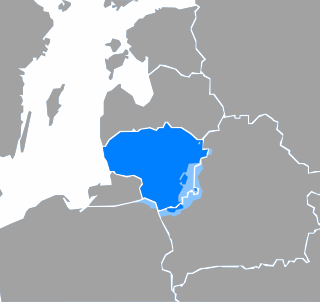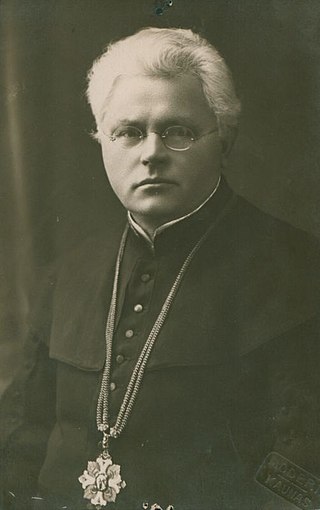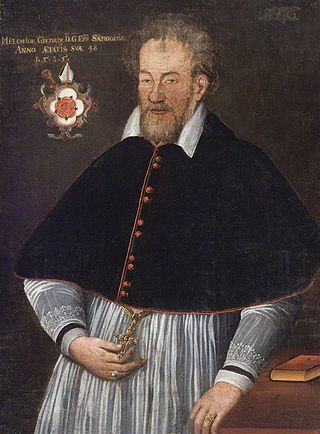Zenonas Ivinskis (25 May 1908 in Kaušėnai village, near Plungė – 24 December 1971 in Bonn, West Germany) was a noted Lithuanian historian.
Zenonas Ivinskis (25 May 1908 in Kaušėnai village, near Plungė – 24 December 1971 in Bonn, West Germany) was a noted Lithuanian historian.
Ivinskis studied at Telšiai and Plungė gymnasiums. In 1925 he entered the University of Lithuania to study philosophy, but later changed the subject to history. In 1929, Ivinskis received a grant to continue his studies in Germany. There, under the direction of prof. Albert Brackmann, he received a Ph.D. for his thesis Geschichte des Bauerstandes in Litauen (English: History of the Conditions of Lithuanian Farmers) in 1932. In 1933 in Gdańsk he was habilitated for his work Lietuvių ir prūsų prekybiniai santykiai pirmojoje XVI a. pusėje (English: Lithuanian and Prussian trade in the first half of the 16th century).
After returning to Lithuania he was drafted into the army. During his free time, he gave lectures at the Vytautas Magnus University and in 1940 became an extraordinary professor. In that year he was invited to work at the Vilnius University. He served as the dean of Faculty of Theology–Philosophy at the Vytautas Magnus University from 1941 to 1942. For his active public defense of university autonomy, the Nazis listed him among other prominent public figures to be transferred to Stutthof concentration camp. Ivinskis was saved from death because he was ill, and was hospitalized for half a year.
In 1944, Ivinskis retreated to the West. Unlike most other Lithuanian refugees, he did not emigrate to the United States and chose to live in Germany. He gave lectures as Gastprofessor at Baltisches Forchungsinstitut in Bonn, and from 1963 taught the history of Eastern Europe at Bonn University. The next year he received his second habilitation in Lithuanian and Polish history and was appointed as a full-time professor. While living in Germany he often traveled to Rome, and conducted research at the Vatican archives. Ivinskis contributed to the Lithuanian encyclopedias published in Boston.

Lithuanian is an East Baltic language belonging to the Baltic branch of the Indo-European language family. It is the language of Lithuanians and the official language of Lithuania as well as one of the official languages of the European Union. There are approximately 2.8 million native Lithuanian speakers in Lithuania and about 1 million speakers elsewhere. Around half a million inhabitants of Lithuania of non-Lithuanian background speak Lithuanian daily as a second language.
Lithuanian mythology is the mythology of Lithuanian polytheism, the religion of pre-Christian Lithuanians. Like other Indo-Europeans, ancient Lithuanians maintained a polytheistic mythology and religious structure. In pre-Christian Lithuania, mythology was a part of polytheistic religion; after Christianisation mythology survived mostly in folklore, customs and festive rituals. Lithuanian mythology is very close to the mythology of other Baltic nations such as Prussians and Latvians, and is considered a part of Baltic mythology.

The Catholic Church in Lithuania is part of the worldwide Catholic Church, under the spiritual leadership of the Pope in Rome. Lithuania is the world's northernmost Catholic majority country. Pope Pius XII gave Lithuania the title of "northernmost outpost of Catholicism in Europe" in 1939.

The Treaty of Melno or Treaty of Lake Melno was a peace treaty ending the Gollub War. It was signed on 27 September 1422, between the Teutonic Knights and an alliance of the Kingdom of Poland and the Grand Duchy of Lithuania at Lake Melno, east of Graudenz (Grudziądz). The treaty resolved territorial disputes between the Knights and Lithuania regarding Lithuania Minor and Samogitia, which had dragged on since 1382, and determined the Prussian–Lithuanian border, which afterwards remained unchanged for about 500 years. A portion of the original border survives as a portion of the modern border between the Republic of Lithuania and Kaliningrad Oblast, Russia, making it one of the oldest and most stable borders in Europe.

Lithuania proper refers to a region that existed within the Grand Duchy of Lithuania where the Lithuanian language was spoken. The primary meaning is identical to the Duchy of Lithuania, a land around which the Grand Duchy of Lithuania evolved. The territory can be traced by Catholic Christian parishes established in pagan Baltic lands of the Grand Duchy of Lithuania subsequent to the Christianization of Lithuania in 1387. Lithuania proper was always distinguished from the Ruthenian lands since the Lithuanians differed from the Ruthenians in their language and faith. The term in Latin was widely used during the Middle Ages and can be found in numerous historical maps until World War I.
Gintaras Beresnevičius was a Lithuanian historian of religions specializing in Baltic mythology. He together with Norbertas Vėlius is considered to be the best specialist in Lithuanian mythology.

Juozas Tumas also known by the pen name Vaižgantas was a Lithuanian Roman Catholic priest and an activist during the Lithuanian National Revival. He was a prolific writer, editor of nine periodicals, university professor, and member of numerous societies and organizations. His most notable works of fiction include the novel Pragiedruliai and the narrative Dėdės ir dėdienės about the ordinary village folk.
Vytautas Merkys was a Lithuanian historian and a professor at Vilnius University.

Samogitian uprisings refer to two uprisings by the Samogitians against the Teutonic Knights in 1401–1404 and 1409. Samogitia was granted to the Teutonic Knights by Vytautas the Great, Grand Duke of Lithuania, several times in order to enlist Knights' support for his other military affairs. The local population resisted Teutonic rule and asked Vytautas to protect them. The first uprising was unsuccessful and Vytautas had to reconfirm his previous promises to transfer Samogitia in the Peace of Raciąż. The second uprising provoked the Knights to declare war on Poland. Hostilities escalated and resulted in the Battle of Grunwald (1410), one of the biggest battles of medieval Europe. The Knights were soundly defeated by the joint Polish–Lithuanian forces, but Vytautas and Jogaila, King of Poland, were unable to capitalize on their victory. Conflicts regarding Samogitia, both diplomatic and military, dragged until the Treaty of Melno (1422).

Marquardvon Salzbach was a Teutonic Knight, who played a prominent role in shaping the relationship between the Knights and the Grand Duchy of Lithuania between 1389 and 1410.

The Prussian mythology was a polytheistic religion of the Old Prussians, indigenous peoples of Prussia before the Prussian Crusade waged by the Teutonic Knights. It was closely related to other Baltic faiths, the Lithuanian and Latvian mythologies. Its myths and legends did not survive as Prussians became Germanized and their culture went extinct in the early 18th century. Fragmentary information on gods and rituals can be found in various medieval chronicles, but most of them are unreliable. No sources document pagan religion before the forced Christianization in the 13th century. Most of what is known about Prussian religion is obtained from dubious 16th-century sources.

Merkelis Giedraitis was Bishop of Samogitia from 1576 to 1609. Educated at Protestant universities in the Duchy of Prussia and Germany, he actively combated the Reformation implementing resolutions of the Council of Trent in Samogitia. Born into the princely Giedraičiai family, he inherited a much neglected diocese that was reduced to only about 20 priests. He became known for his devotion and work to end clerical abuses, strengthen churches and schools, and increase the number of priests. Giedraitis invited the Jesuits to Kražiai where the Kražiai College was established already after his death and the Bernadines to Kretinga where they established the first monastery in Samogitia. He sponsored Mikalojus Daukša, who translated and published Catechism (1595) and Postil (1599) in the Lithuanian language—the first Lithuanian books printed within the Grand Duchy of Lithuania. He also supported Maciej Stryjkowski, author of the first printed history of Lithuania. In recognition of his efforts, Giedraitis is often referred to as the second baptist of Samogitia.

The Catechism, or Education Obligatory to Every Christian of Mikalojus Daukša was the first Lithuanian-language book printed in the Grand Duchy of Lithuania. It was published by the press of Vilnius Jesuit Academy in 1595 with financial support of Bishop Merkelis Giedraitis. The catechism is not an original work but a translation. As such, the work holds little value in terms of content, but is extremely valuable to the study of the Lithuanian language due to its lexical richness. The sole surviving copy is kept at Vilnius University Library.

Leonas Prapuolenis was a Lithuanian public figure, commander and leader of the June Uprising of 1941 in Lithuania.
Jurgis Zablockis was one of the first known writers in the Lithuanian language. Two hymns that he translated from German to Lithuanian were published by Martynas Mažvydas. One of them was published in Simple Words of Catechism, the first printed book in the Lithuanian language. He earned a living tutoring sons of the nobility and frequently accompanied them to Protestant universities in Germany. He was a tutor to Martynas Mažvydas and Bishop Merkelis Giedraitis.

The Samogitian Diocese Museum is a museum dedicated to the former Diocese of Samogitia. Established in 1999, the museum is located in the building of the former Varniai Priest Seminary which was relocated to Kaunas after the failed Uprising of 1863. The museum is a branch of the Samogitian Museum Alka based in Telšiai.
The Lithuanian Women's Union was a women's organization active in Lithuania from 1922 to 1933. The First Congress of Lithuanian Women held in 1907 called for the establishment of the union, but it was not accomplished due to conflicts between Catholic clergy and socialists. The union was officially established in 1922 and initially chaired by Felicija Bortkevičienė. The union was supported by the Social Democratic Party of Lithuania and the Peasant Union, opponents of the authoritarian President Antanas Smetona who came to power in 1926. Therefore, it was in opposition to the government-sponsored Lithuanian Women's Council. The union was officially closed on 10 June 1935.

Gediminas' Cap was the most important regalia of the Lithuanian monarchs who ruled the Grand Duchy of Lithuania until the Union of Lublin in 1569. During the inaugurations of Lithuanian monarchs, Gediminas' Cap was placed on the monarch's heads by the Bishop of Vilnius in Vilnius Cathedral.

Vilius Gaigalaitis or Wilhelm Gaigalat was a Lutheran priest and Prussian Lithuanian activist. He was a member of the Prussian House of Representatives (1903–1918), director of the consistory of the Evangelical Lutheran Church in Lithuania (1925–1933), and professor at Vytautas Magnus University (1925–1936).